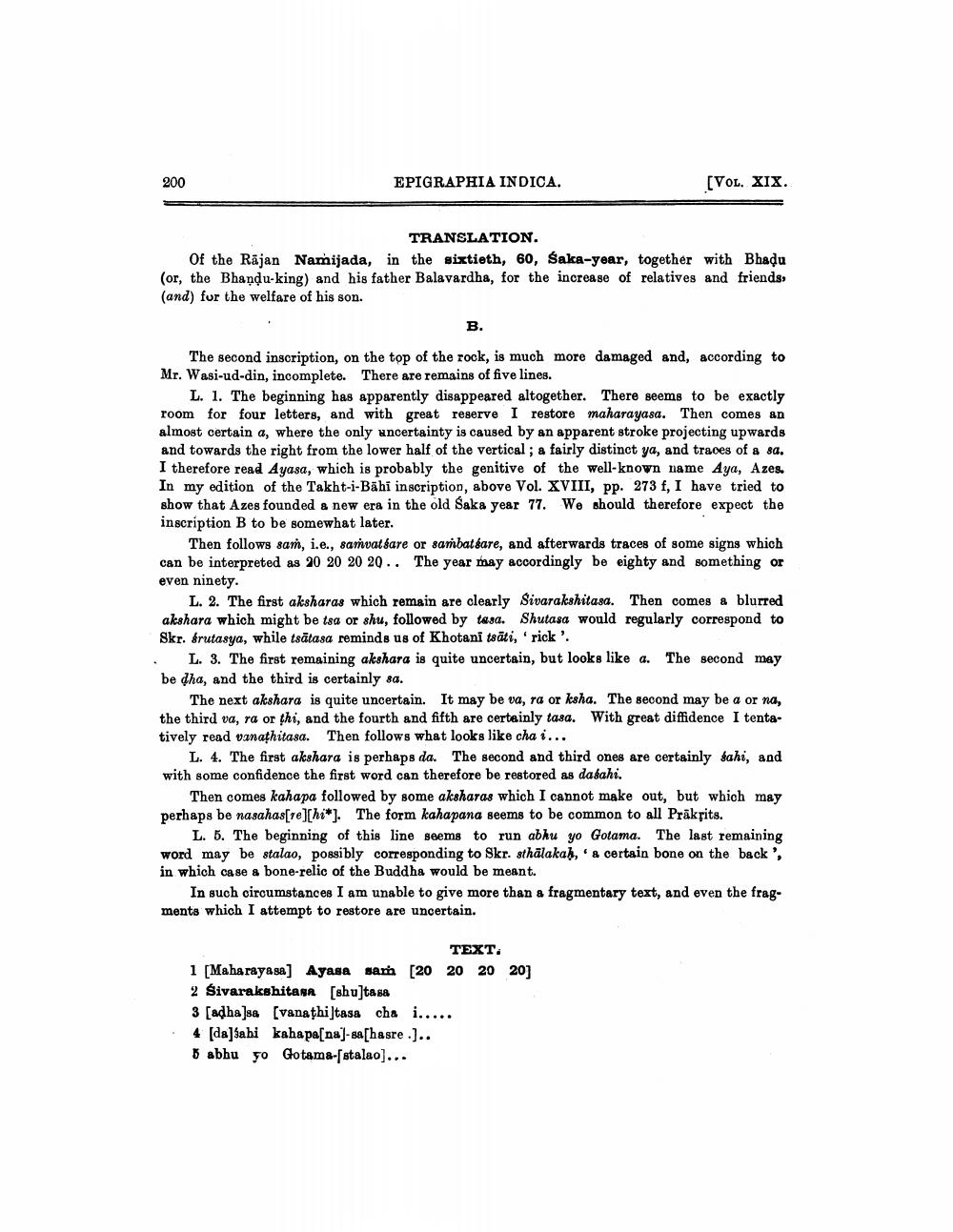________________
200
EPIGRAPHIA INDICA.
(VOL. XIX.
TRANSLATION. Of the Rājan Namijada, in the sixtieth, 60, Saka-year, together with Bhadu (or, the Bhandu-king) and his father Balavardha, for the increase of relatives and friends, (and) for the welfare of his son.
B.
The second inscription, on the top of the rock, is much more damaged and, according to Mr. Wasi-ud-din, incomplete. There are remains of five lines.
L. 1. The beginning has apparently disappeared altogether. There seems to be exactly room for four letters, and with great reserve I restore maharayasa. Then comes an almost certain a, where the only uncertainty is caused by an apparent stroke projecting upwards and towards the right from the lower half of the vertical; a fairly distinct ya, and traces of a sa. I therefore read Ayasa, which is probably the genitive of the well-known name Aya, Azes. In my edition of the Takht-i-Bāhi inscription, above Vol. XVIII, pp. 273 f, I have tried to show that Azes founded a new era in the old Saka year 77. We should therefore expect the inscription B to be somewhat later.
Then follows sam, i.e., samvatsare or sambatsare, and afterwards traces of some signs which can be interpreted as 20 20 20 20.. The year may accordingly be eighty and something or even ninety.
L. 2. The first aksharas which remain are clearly Sivarakshitasa. Then comes a blurred akshara which might be tsa or shu, followed by tasa. Shutasa would regularly correspond to Skr. frutasya, while tsātasa reminds us of Khotani tsäti, rick'. . L. 3. The first remaining akshara is quite uncertain, but looks like a. The second may be dha, and the third is certainly sa.
The next akshara is quite uncertain. It may be va, ta or ksha. The second may be a or na, the third va, ra or thi, and the fourth and fifth are certainly tasa. With great diffidence I tentatively read vanathitasa. Then follows what looks like cha i...
L. 4. The first akshara is perhaps da. The second and third ones are certainly sahi, and with some confidence the first word can therefore be restored as dasahi.
Then comes kahapa followed by some aksharas which I cannot make out, but which may perhaps be nasahas[re][hi*). The form kahapana seems to be common to all Prākpits.
L. 5. The beginning of this line seems to run abhu yo Gotama. The last remaining word may be stalao, possibly corresponding to Skr. sthālakah,'& certain bone on the back, in which case a bone-relic of the Buddha would be meant.
In such circumstances I am unable to give more than a fragmentary text, and even the fragments which I attempt to restore are uncertain.
TEXT. 1 [Maharayasa] Ayasa sam [20 20 20 20] 2 Sivarakshitaga [shu]tasa 3 [adha]sa (vanathi]tasa cha i..... 4 [da]sabi kahapa[na]-sa [hasre .].. 5abhu yo Gotama-[stalao]...




